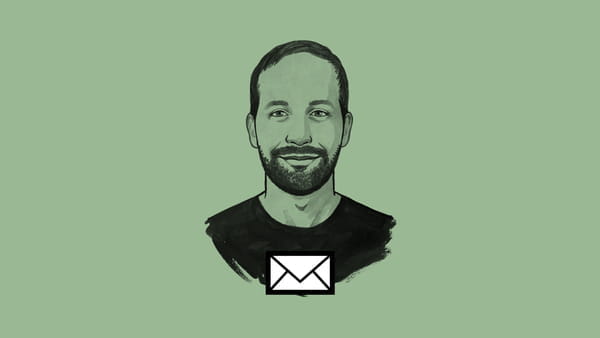Hi,
This week marks the 50th anniversary of Earth Day. It’s the closest we get to a secular holiday that celebrates possibility and beauty and life. But when it started, it was born from a place of anger and desperation.
Back during the heart of the cold war, the US president John F. Kennedy launched the Apollo program with a goal of sending humans farther into space than ever before. In 1968, astronauts slingshotting around the moon snapped the famous Earthrise photo.

In hindsight, the billions and billions of dollars spent on Apollo were all worth it, just for this one image.
In the summer of 1969, just a few weeks before the first moon landing, the hopelessly polluted Cuyahoga River caught fire near Cleveland, Ohio. A few months earlier, one of the largest oil spills in history happened offshore of Santa Barbara, California. The 25 years since the end of the second world war had seen an expansion of industrialism that was ushering in environmental collapse. People were breathing the waste products of an unchecked, extractive economy.
In April 1970, the first Earth Day, millions of people took to the streets in what is still one of the largest outpourings of dissent in human history.
Maybe there was something about the juxtaposition of those captivating images of our planet from space that sparked a revolution in our thinking from a global perspective. Yes, our world was more prosperous than ever, but what was it all for?
In the US, the 1970s saw laws change quickly to protect the environment. The Clean Air Act, the Clean Water Act, and the Endangered Species Act transformed the country.
Here’s the “good” news on climate for today
Fifty years from now, we’ll have made a LOT more progress than that.
I’ll leave it to Bill McKibben, a key figure of the climate movement for much of the past 50 years, to talk more about Earth Day’s legacy and what today means.
But here’s my hope: What we’ve learned in 2020 that we didn’t know in 1970 is that climate change is really just a manifestation of inequality.
About 75% of the carbon emissions in the history of humanity have been emitted since the first Earth Day. In many ways, we’re in a much worse position, globally, compared to 1970. We have far less time to solve a far bigger problem.
In rich countries, like the US, we’ve come a long way since the first Earth Day, but that progress hasn’t been felt by everyone. Air pollution deaths in the US are still borne disproportionately by black people, Hispanics, and Indigenous people, even though they contribute the least to the climate problem.
The polluting industries that were in the US have shifted elsewhere: electronics to China, factories to Mexico and South Asia, oil drilling to Nigeria. In all those places, pollution has gotten far worse since 1970. Air pollution is now a leading cause of death globally, its own pandemic that kills millions of people each year.
Even though scientists and activists have been raising the alarm for decades, citizens are still only just beginning to pay attention to climate change in large numbers. Early results from an ongoing UN survey show that climate change is now the number one concern of people worldwide. That, more than anything, gives me hope that the next 50 years will be truly transformative in ways we can scarcely imagine now.
What could the world look like 50 years from today, on the 100th anniversary of Earth Day?
What will our generation’s Earthrise photo be?
For 2070, author Emma Marris has a vision of an ecological society, one that has transformed its core set of values:
“Borders will be softer; backyards messier. Wilderness corridors will thread through farmlands and cities; floodplains will store carbon, produce food, and control floods. Kids will climb trees in schoolyard orchards to pick fruit,” she told National Geographic in a recent interview.
The world in 2070 will not be a utopia. We’ve already locked in enough climate change to melt the Arctic, no matter what we choose from here. But we will have a world that works for everyone in a way that it just doesn’t right now – that, in the words of Joanna Macy, is "the work that reconnects". That is our shared goal now.
A world not focused on growth, but on life.
A world not focused on ownership, but on solidarity.
A world not focused on competition, but on connection.
Those might sound like wishy-washy socialist utopian dreams, but they must be true for our civilisation to survive. So, I believe that they will become true, and it will happen in the next 50 years.
Right now, we are suffering with our world. But that suffering isn’t inevitable. Over the next 50 years we will be tearing down, building up, and finding meaning in it all as a truly planetary civilisation for the first time in our species’ history.
PS: If I had one of those Twitter vanity names, right now it would be “quaranteenage mutant ninja turtle”. With a cute little turtle emoji (🐢), because I like turtles.
 Would you like to receive my newsletter in your inbox?
Follow my weekly newsletter for an insight into the work, thoughts and ideas that go into being a Climate correspondent.
Would you like to receive my newsletter in your inbox?
Follow my weekly newsletter for an insight into the work, thoughts and ideas that go into being a Climate correspondent.

